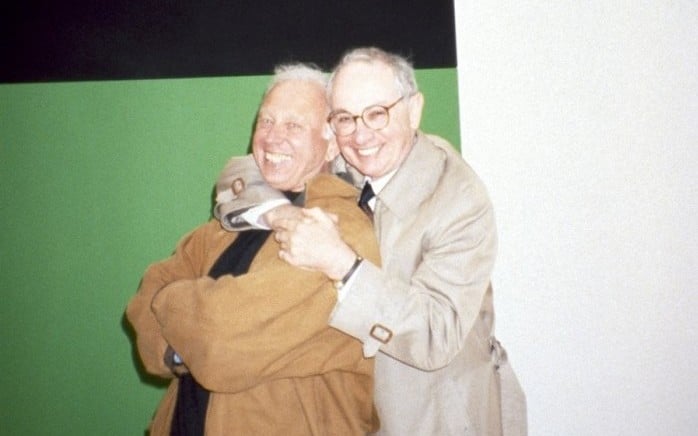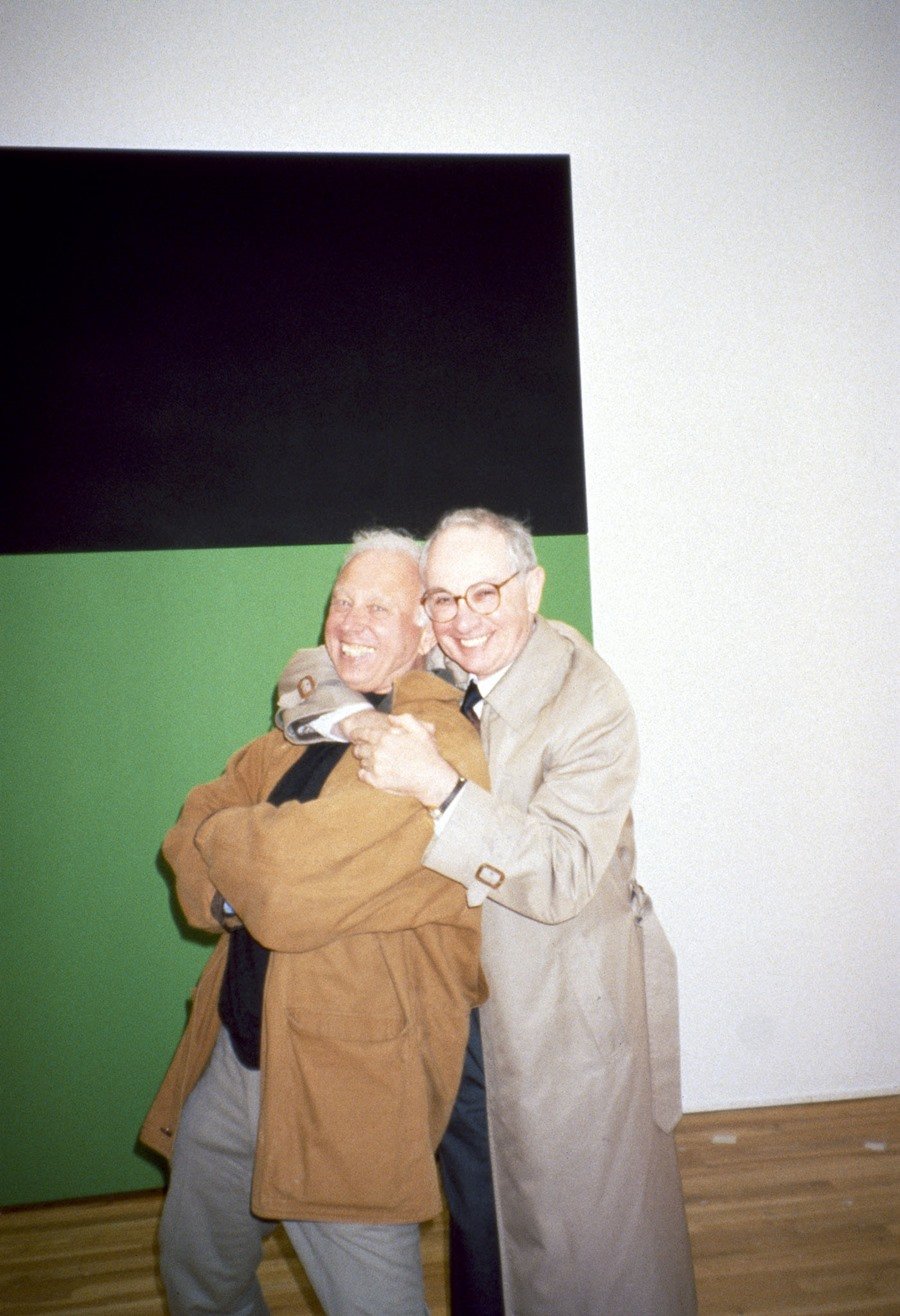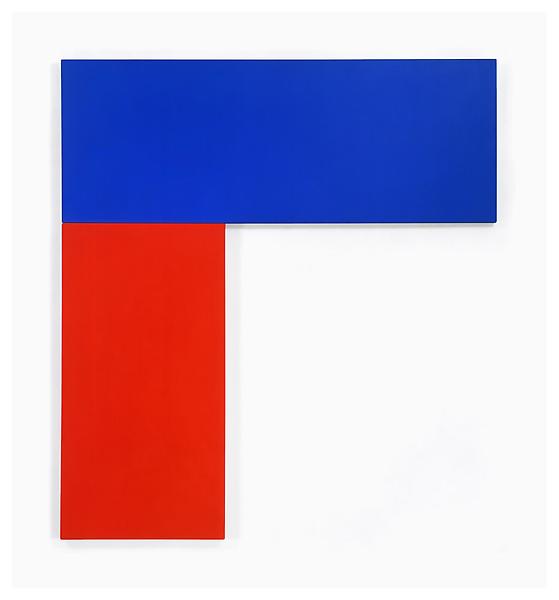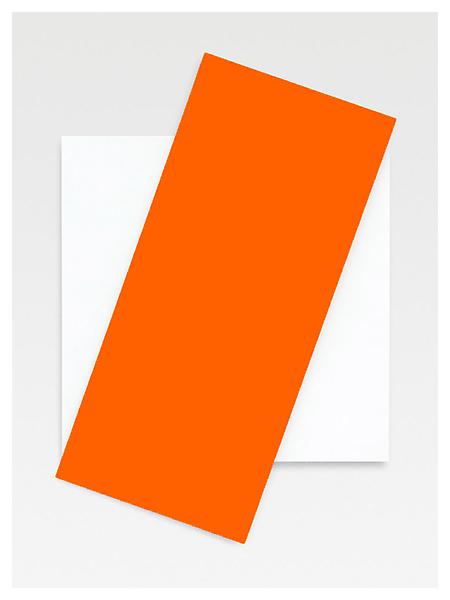People
Artist Ellsworth Kelly, Master of Hard-Edge Abstraction, Dead at 92
He will be remembered as one of the most influential American painters of the 20th century.

He will be remembered as one of the most influential American painters of the 20th century.

Henri Neuendorf


Walker Art Center’s Martin Friedman, right, with Ellsworth Kelly. Photo courtesy Walker Art Center.
The American painter and sculptor Ellsworth Kelly passed away on Sunday at the age of 92. Kelly died of natural causes at his home in Spencertown, New York, his gallerist Matthew Marks announced. He is survived by his husband Jack Shear and his brother David.
Kelly is considered one of the most influential American artists of the 20th century, known for his colorful geometric abstractions.
“I think he bridged European and American modernism,” Marks told the Guardian. “He was a real American original.”

Ellsworth Kelly at Matthew Marks Gallery.
Photo: Matthew Marks Gallery, New York
The artist’s eclectic influences range from bird watching to his time working as a camouflage designer in the US Army as well as automatic drawing exercises favored by European surrealists.
After being discharged from the army at the end of World War II, Kelly enrolled at the School of the Museum of Fine Arts, Boston, in 1945, where he studied painting.
According to the New York Times, the artist was little affected by the American Abstract Expressionist movement of the 1950s due to his decision to settle in Paris in 1948, with support from the G.I. Bill.

Ellsworth Kelly Blue Tablet (1962)
Photo: Matthew Marks Gallery, New York
As a result, his formative years as an artist were strongly influenced by Picasso and the work of some of his Parisian contemporaries such as the abstract sculptor Constantin Brancusi, the surrealist Jean Arp, as well as fellow American expatriates including Alexander Calder and the painter Jack Youngerman.
His pared-down abstractions were not always well-received during this time; a relief work he had submitted for a group show was rejected on the ground that it wasn’t art, according to Holland Cotter at the NYT.
In 1954, with his G.I. Bill support running out, he returned to the US and settled in New York city, encouraged to think his art may be accepted there after reading a favorable review of an Ad Reinhardt exhibition. Indeed, it wasn’t long before Reinhardt’s dealer, Betty Parsons, offered him an exhibition in 1956.
In 1959 his arrival on the New York art scene was cemented with his inclusion in the Museum of Modern Art’s “Sixteen Americans” group show, alongside Jasper Johns, Robert Rauschenberg, Frank Stella, and others.

Ellsworth Kelly Chatham II, Blue/Red (1971)
Photo: Matthew Marks Gallery, New York
In the sixties, his career remained strong and steady albeit moderate popularity in an era dominated Pop Art, Op Art and Minimalism. Kelly also started experimenting with sculpture and shaped canvases during this time.
Kelly’s profile grew following his participation at the Venice Biennale, in 1966, and Documenta IV in Kassel, in 1968.
Boosted by strong gallery representation under the guidance of Leo Castelli and Blum Helman, Kelly enjoyed mainstream success and recognition in the 1970s, culminating in his first retrospective at the Museum of Modern Art in New York, in 1973, and followed by his first major European retrospective at the Stedelijk Museum, Amsterdam, in 1979.

Ellsworth Kelly Orange Diagonal (2008)
Photo: Matthew Marks Gallery, New York
His second American retrospective at the Solomon R. Guggenheim Museum in 1996 also traveled to Los Angeles, London, and Munich.
The artist’s late career was hampered by a respiratory condition, which he believed was caused by repeated exposure to turpentine.
In 2013, Kelly was honored with the highest US award for artistic excellence, the National Medal of Arts, which was presented to him by President Obama. At an unveiling of a wing showcasing his work at Boston’s Museum of Fine Art that same year, he said “I am nourished by the past, I am questioning the present, and I am stepping into the future.”